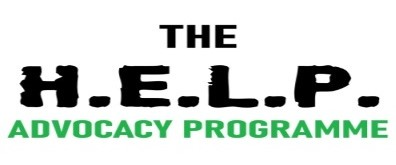5 "भारतीय विधि महिलाओं के प्रति अति संवेदनशील है।" न्यायिक सक्रियता के द्वारा उच्चतम् न्यायालय ने स्त्रियों के मानवाधिकारों की रक्षा करने में क्या योगदान किया है? आलोचनात्मक विवेचना कीजिए?
"Indian Law is very
sensitive towards women" critically discuss the role of Supreme Court in
protecting human rights of women through Judicial activism.
The statement "Indian law is very sensitive towards women" underscores the role of Indian legal and judicial systems in advancing and protecting the human rights of women. The Supreme Court of India has played a pivotal role in ensuring gender justice and safeguarding women's rights through judicial activism. Below is a critical discussion of the role of the Supreme Court in this context:
1. Expanding the Scope of Constitutional Rights for Women
- Role of Judicial Activism: The Supreme Court has expanded the interpretation of Article 14 (Equality before Law), Article 15(3) (Special provisions for women and children), and Article 21 (Right to Life and Personal Liberty) to include gender justice.
- Landmark Case:
- Vishaka v. State of Rajasthan (1997): The Court laid down guidelines to address sexual harassment at the workplace, filling a legislative vacuum and upholding women's dignity under Article 21.
2. Protection against Sexual Violence
- Role of Judicial Activism: The judiciary has strengthened laws dealing with crimes like rape, molestation, and sexual harassment. It has also emphasized speedy trials and strict punishments.
- Landmark Cases:
- Nirbhaya Case (2012): In Mukesh & Ors. v. State of NCT of Delhi (2017), the Supreme Court upheld the death penalty for the perpetrators of the gang rape, emphasizing that crimes against women cannot be tolerated.
- State of Punjab v. Gurmit Singh (1996): The Court emphasized the sensitivity required while handling cases of sexual assault, ensuring the victim's dignity and privacy.
3. Recognition of Women’s Reproductive Rights
- Role of Judicial Activism: The Court has recognized reproductive rights as a part of women’s right to life and personal liberty (Article 21).
- Landmark Case:
- Suchita Srivastava v. Chandigarh Administration (2009): The Court upheld a woman’s right to make reproductive choices, including the decision to terminate a pregnancy, as part of her personal liberty.
4. Criminalization of Social Evils
- Role of Judicial Activism: The judiciary has played a proactive role in combating social evils like dowry, honor killings, and domestic violence, which disproportionately affect women.
- Landmark Cases:
- Shakti Vahini v. Union of India (2018): The Court outlawed honor killings, emphasizing the constitutional right to marry a person of choice.
- Indra Sarma v. V.K.V. Sarma (2013): The Court extended protection to women in live-in relationships under the Domestic Violence Act.
5. Economic Empowerment and Workplace Equality
- Role of Judicial Activism: The Supreme Court has upheld women’s right to equality in the workplace and protection against discrimination.
- Landmark Cases:
- Air India v. Nergesh Meerza (1981): The Court struck down discriminatory service conditions for female employees.
- Secretary, Ministry of Defence v. Babita Puniya (2020): The Court granted permanent commission to women in the armed forces, ensuring equality in employment.
6. Right to Maintenance and Matrimonial Relief
- Role of Judicial Activism: The judiciary has interpreted laws in favor of women to provide them financial security in marital disputes.
- Landmark Cases:
- Danial Latifi v. Union of India (2001): The Court upheld a Muslim woman's right to maintenance beyond the iddat period under the Muslim Women (Protection of Rights on Divorce) Act, 1986.
- Vinita Sharma v. Rakesh Sharma (2020): The Court ruled that daughters have equal rights to ancestral property under the Hindu Succession Act, 1956.
7. Protection from Trafficking and Exploitation
- Role of Judicial Activism: The judiciary has actively worked to curb human trafficking and exploitation of women.
- Landmark Cases:
- Bachpan Bachao Andolan v. Union of India (2011): The Court directed measures to combat human trafficking and protect women from forced labor and exploitation.
8. Safeguarding Women’s Personal Liberty
- Role of Judicial Activism: The judiciary has upheld women’s autonomy in personal decisions, such as marriage and religion.
- Landmark Cases:
- Shafin Jahan v. Asokan K.M. (2018): The Court upheld a woman’s right to choose her spouse, rejecting allegations of forced conversion in the context of a consensual interfaith marriage.
Critical Perspective
While the Supreme Court’s judicial activism has greatly advanced women’s rights in India, certain challenges remain:
- Enforcement Issues: Despite progressive judgments, enforcement of these rulings is often weak due to systemic challenges.
- Judicial Overreach: Critics argue that judicial activism sometimes ventures into the domain of the legislature, raising questions about the separation of powers.
- Socio-Cultural Resistance: Societal norms and patriarchy continue to hinder the full realization of these judicial directives.
- Inconsistent Implementation: Not all judgments are uniformly applied, leading to disparities in outcomes for women in different regions or socio-economic backgrounds.
Summary :
The Supreme Court of India has played a significant role in protecting and advancing the human rights of women through judicial activism. It has been instrumental in addressing gender-based violence, promoting equality, and safeguarding personal liberties. However, the full impact of these progressive judgments can only be realized with effective enforcement, societal awareness, and addressing systemic challenges. While Indian law has shown sensitivity towards women, continuous efforts are needed to bridge the gap between legal provisions and ground realities.
- Textbook on Human Rights Law and Practice by Rashee Jain
- International Law & Human Rights by Dr. H.O. Agarwal
- Human Rights by Michael Freeman
- International Human Rights Law by David Harris
- A philosophical Introduction to Human Rights by Thomas Mertens
- Human Rights Law by Howard Davis
- Human Rights A Very Short Introduction by Andrew Clapham

Comments
Post a Comment